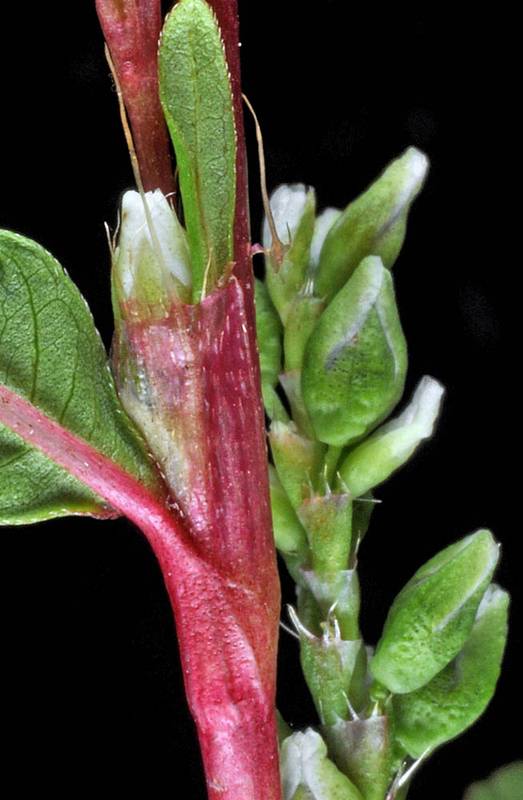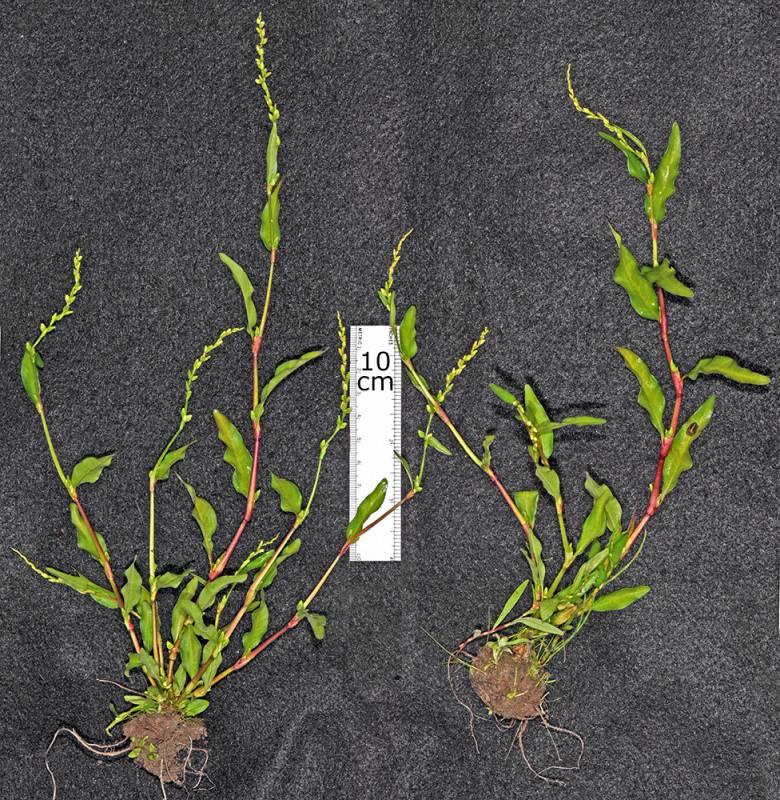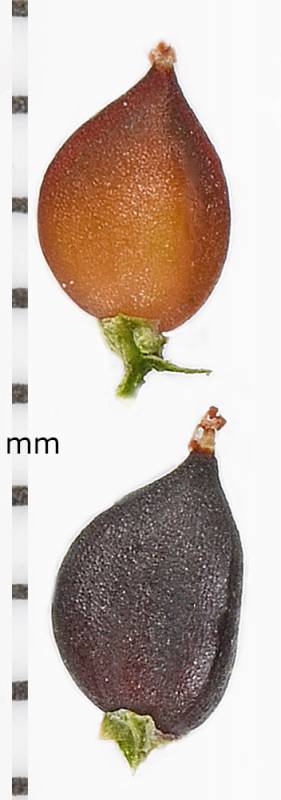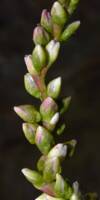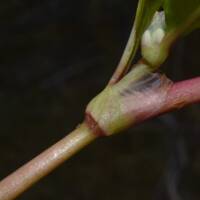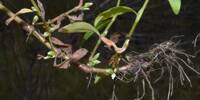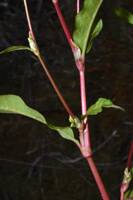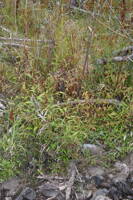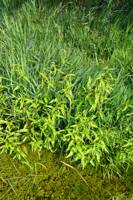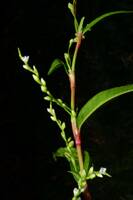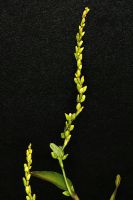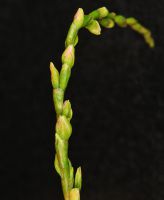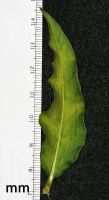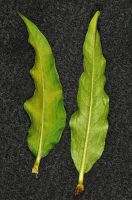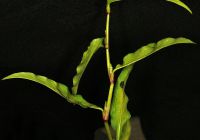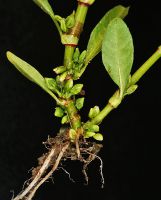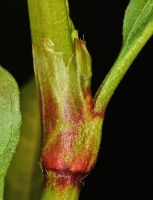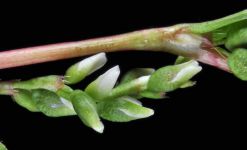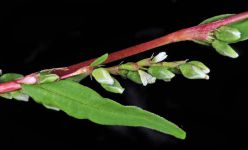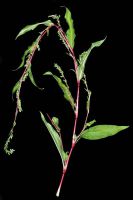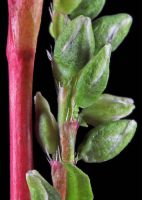Distribution: Occurring on both sides of the Cascades crest in Washington; Alaska to California, east across most of North America to the Atlantic Coast.
Habitat: Shores, swales, ditches, and disturbed ground.
Flowers: July-September
Origin: Introduced from Europe
Growth Duration: Annual
Conservation Status: Not of concern
Pollination: Bees, flies, wasps
Mostly glabrous annual, the stems rooting at the nodes, the upright stems simple to freely branched, peppery to the taste, the herbage with glands in small pits.
Leaves alternate, numerous, all cauline, only slightly reduced upward, the blades lanceolate to elliptic-lanceolate, 5-7 cm. long, the stipules up to 15 mm. long, oblique.
Inflorescence a terminal raceme and several lateral, spike-like, interrupted, lateral racemes 2-7 cm. long; pedicles 1-2 mm. long; perianth 3-4 mm. long, glandular, attached to about mid-length, the 4 segments greenish with white or pink margins, oblong; stamens 4 or 6; styles 2 or 3, distinct.
Achenes brown, 3 mm. long.
Publication: Hist. Nat. Vég. 10: 536. 1841.
Polygonum hydropiper L. var. projectum Stanford
PNW Herbaria: Specimen records of Persicaria hydropiper in the Consortium of Pacific Northwest Herbaria database
WA Flora Checklist: Persicaria hydropiper checklist entry
OregonFlora: Persicaria hydropiper information
E-Flora BC: Persicaria hydropiper atlas page
CalPhotos: Persicaria hydropiper photos

